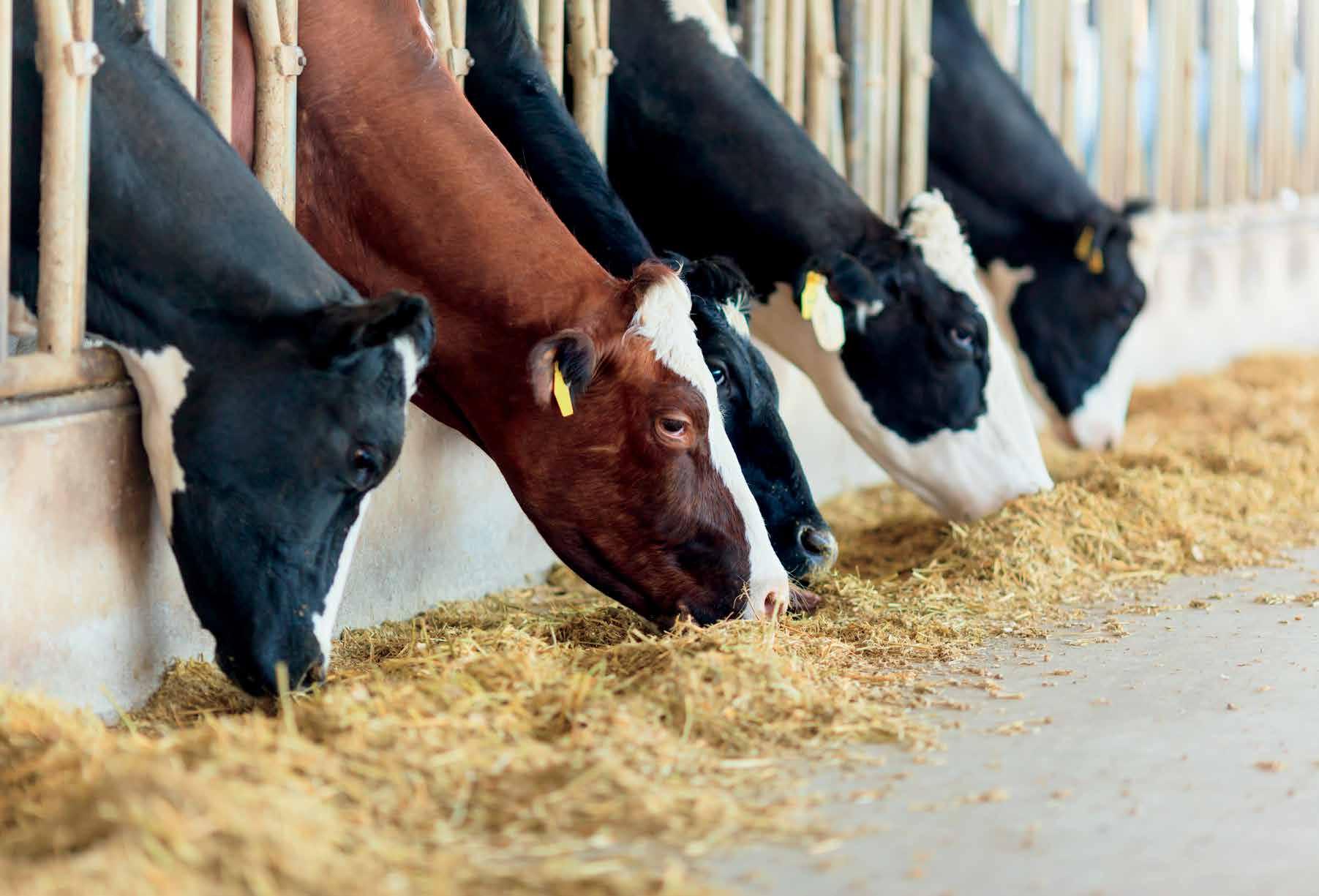Merced County Farm News
Merced County Farm Bureau endorses Rabbi Amnon Shor for Senate District 14
By: MCFBMerced County Farm Bureau (MCFB) met with candidates vying to represent Merced County for Senate District 14 during the September Board of Directors Meeting. Following the debate by the two candidates, directors discussed each candidate at length. MCFB elected to endorse Rabbi Shor for Senate District 14.
Rabbi Shor was born in Israel, fought in the 1973 Yom Kippur War for the Israeli Defense Forces, and immigrated to the United States in 1980. Since moving to the United States, he has
owned several businesses and is now the senior Rabbi for the congregation he formed in 2004. He and his wife, Lynette, have three children and seven grandchildren together.
Rabbi Shor responded, “I am very appreciative to receive the endorsement of the Merced County Farm Bureau. Our farmers should have the water they require to grow the food we need.”

Central Valley and representing the needs of the district. His priorities include improving current water infrastructure and limiting the burdensome regulations on those doing

from the Director's Desk
Breanne VandenbergMCFBhas had a busy fall as we finish up various projects, start to look to the final months of the 2022 year and plan for 2023. If you haven’t taken advantage of our CE unit courses, I would encourage you to look for them in the coming year. Through the hard work of our staff, attendees have not only heard from speakers focused on research projects and current policies, but also on projected regulations that may adopted in the next 1-2 years. Understandably this is not the information that everyone wants to hear, but at least you are able to get a firsthand account prior to policy being adopted.

The next few weeks will also host the Young Agriculturist Speaker Series. High school and junior college students interested in agriculture are encouraged to attend. We have two sessions taking place in late October and early November. The first will be a financial discussion led by a financial advisor with years of experience in the field. The later session will be none other than MCFB 2nd Vice President Dave Barroso of Joe & Renee Barroso & Sons Dairy. He will speak to our attendees on what successes and challenges bring with it when farming in California.
I would also encourage all graduating seniors to check out our scholarships (maybe a not so gentle nudge is needed from parents)! Each year our committees select multiple students with funds reaching over $25,000 in funding. Several scholarships are monitored by our organization and include the MCFB Scholarship, MCFB Young Farmers & Ranchers Scholarship, Merced County Farm Workers Children’s

Scholarship and the Arthur R. Nutcher Scholarship. Applications have opened and can be found through counselors, FFA programs or online at www. mercedfarmbureau.org. Applications must be postmarked or submitted by Friday, December 16.


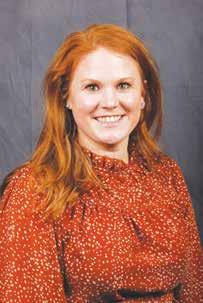
While our regular FARM2U Day has not come back to its full format this year, we have continued our Virtual FARM2U Program. Several new videos have been posted with more coming in the next few months. We’ve found that
kids of multiple ages, even adults, can gain insight into agricultural practices. These can also be found on our website under the Virtual FARM2U Program tab.
As we look towards 2023, we are in the process of planning events such as Coffee Talks, our Annual Meeting and bringing back our well-attended Water Symposium all within the first few months! At this point, you may be wondering why a column in October warrants updates that would normally
come closer to December. I’m writing this as I complete my last week prior to maternity leave. We’re expecting a little boy to join the Farm Bureau Family at the end of the month. My planned return will occur in early February so my column will be on hiatus for a bit. Fear not, our team here between staff and directors can help with all your needs during this time.
Wishing you all the best as you wrap up any harvest activities and head into the holidays!
from the President's Corner
Joe SansoniFor some reason it just seems hard to believe it’s already October! Maybe it’s because I’m getting older and time just seems to pick up speed as we age. Maybe it’s because like most agricultural operations these days, we are doing more work with less people all the time, so I’m too busy to pay close attention to the days and weeks passing by on the calendar. Or…maybe it’s because as I sit here and write this we are a solid week into October and it’s still at or over 90 degrees every day! Every time I look at the 10 day forecast on my weather app it seems like the hot weather keeps getting extended farther out. “Oh good!” I think to myself, “it’s finally supposed to be cooling off in a few days!” Then a couple days later I check it again and they’ve added 4 or 5 more days of 90 plus temps. It certainly doesn’t feel like October, that’s for sure. It’s strange and somewhat comical to drive around seeing Halloween decorations everywhere while running the AC at max and wiping sweat off my brow. At least the days are shorter and the mornings cooler! And, of course, it
makes ideal weather conditions for the cotton harvest which is just getting underway, as well as for those who still need to finish harvesting late variety almonds and other crops. There’s always a silver lining! October is one of those months that can go either way - it can be a warm and dry extension of summer like it has so far this year, or it can bring early fall rains with ensuing fog and heavy morning dew. I suppose if you ask any farmer which type of October they’d prefer, 10 out of 10 would likely pick warm and dry. Although I’m definitely ready for cooler weather, I’m also thankful that we were able to finish our harvest without difficulty, and I certainly hope that all of our valued, hard-working Merced County & Valley farmers are able to get their crops in safely and with high quality before any serious temperamental weather sets in.
I am hopeful and praying that we will see some solid precipitation and snowpack numbers this winter. With the way our state’s water resources have been woefully mismanaged, along with the lack of any new water storage facilities, the only thing that will bring us any real relief is plenty of rain and snow. A dry winter will spell disaster for the Valley, especially with SGMA restrictions coming online soon. In fact, severe drought conditions would actually make a case for the state to impose even more stringent pumping and water rights restrictions sooner than already planned. We have to start planning for our next growing season now, and the single biggest makeor-break component for any farming operation is water. We have to start contingency planning early for various scenarios, from “no problem, we have plenty water” to the frightening yet
realistically possible “we have zero water.” Sometimes we won’t know which end of the spectrum we’ll wind up on until late in the spring, as what happened this year in fact. I always start my planning with the worst-case scenario in mind. I have it fairly easy compared to many farmers however, because I’m a one crop farmer. For those who farm multiple crops it becomes a literal nightmare to try to game plan for multiple scenarios depending on how things play out. How many acres can they plan to realistically farm? What crops and varieties? How much water does each combination require? It’s not an easy matrix to develop. Planting fields without the ability to finish out the crop actually becomes the worst possible waste of water and resources. Not planting fields that they then realize could’ve been planted after all is a stinging waste of potential production and income, in addition to lost work and income for farm workers, local businesses and suppliers.
During the August and September MCFB board meetings, we heard from the candidates from the various races for both state and federal offices that will be representing our county or in some cases parts of the county. Every single candidate we heard from regardless of
political affiliation claimed to know and understand that water is at the top of the priority list for Merced County and for the Valley. While they all generally agreed on this topic, in some cases it was clear that not all have a fully accurate and comprehensive grasp of the current landscape, history and scope of water politics and management in our state. Some definitely do, however, and hopefully the most knowledgeable and committed candidates – those who truly understand the critical importance of securing sufficient water supplies for agriculture, cutting through the quagmire of red tape to get new storage facilities built, and helping restore common sense and fact-based reasoning to the political processes – will be the ones the voters will send to Sacramento and Washington on our behalf. We in CA agriculture cannot continue to provide the world’s finest, safest, most abundant and diverse produce that the nation and world depends on without big, positive changes and additions to our water management, storage, and delivery systems.
Enjoy Fall when it gets here, Happy Halloween, make sure to do your homework on all the candidates and propositions, and remember to vote in November!
From
Merced County Farm Bureau’s Mission Statement

Merced County Farm Bureau is an independent, nongovernmental, grassroots organization that advocates for the men and women who provide food, fiber, and nursery products for our community, state, and nation.
Merced County Farm Bureau exists for the purpose of improving the ability of individuals engaged in production
agriculture to utilize California resources to produce food and fiber in the most profitable, efficient and responsible manner possible, guaranteeing our nation a domestic food supply.
Merced County Farm Bureau supports policies and legislation that promote and protect our Country’s number one industryagriculture for future generations and the security of our nation.
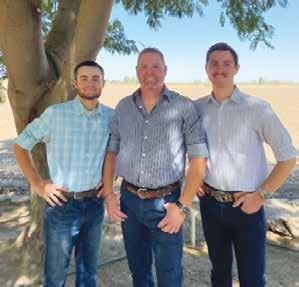
Entered
Merced County Farm News

Published monhtly by
Phone (209) 723-3001
Fax (209) 722-3814
646 S. Hwy 59, Merced CA 95341
Email: dflake@mercedfarmbureau.org (USPS 339-500)

the US
E. Grant
POSTMASTER:
723-3001;
in Merced,
Merced
Road, Suite B,
P.O. Box 1232,
(209) 722-3814. Merced County
in
Merced County
Merced
Bureau
Board
Toso
765-401-4078



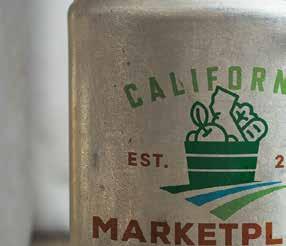




U.S. Fish and Wildlife Service seeks public comment on proposed listing for San Francisco Bay population of longfin smelt
By: Tamara Ward, U.S. Fish and Wildlife ServiceOctober6, 2022 - Sacramento, Calif.— The U.S. Fish and Wildlife Service is proposing to list the San Francisco Bay-Delta distinct population segment of longfin smelt as an endangered species under the Endangered Species Act. Scientific analysis shows the Bay-Delta longfin smelt is in danger of extinction throughout its range. The Service is seeking public comment for 60 days after publication on the proposed rule in the Federal Register.
The Service completed a thorough review of the Bay-Delta population of longfin smelt, its habitat and current threats to determine whether ESA protections are warranted. Habitat loss due to the long-term reduction and alteration of freshwater flows into the San Francisco Bay estuary is the primary threat. Longfin smelt require specific water temperatures and
adequate freshwater flows to survive.
“The longfin smelt may be small and unassuming, but they are an important part of the Bay-Delta estuary. The loss of this species would have a ripple effect throughout the ecosystem,” said Paul Souza, the Service’s Pacific Southwest Regional Director. “If this species is listed, the Service will work with partners to balance the needs of the species and communities that depend on Bay-Delta water resources. Additional funding for recovery actions can also be made available through the Service and our partners for continued conservation of the fish in California.”
Examples of potential recovery actions include habitat restoration, research, captive propagation and reintroduction, and outreach and education. Listing would also require federal agencies to consult with the Service when proposing projects within the Bay-Delta longfin smelt’s range and would enable the designation of critical habitat under the ESA.
The longfin smelt is 3.5 to 4.3 inches long with a translucent silver appearance
on its sides and gut, while its back has an olive to iridescent pinkish hue. The fish lives about two to three years, in bays and estuaries along the coast from Northern California to Alaska. The Bay-Delta longfin smelt occupies only the San Francisco Bay Estuary and areas of the Pacific Ocean out to the Farallon Islands. Bay-Delta longfin smelt are anadromous, meaning older juveniles and adults can migrate to the ocean, but must return to fresh water to spawn.
Longfin smelt are currently listed as a threatened species under California’s Endangered Species Act, which prohibits unpermitted possession, purchase, sale or take of listed species. However, the state’s definition of take does not include harm, which under the federal ESA can include destruction of habitat.
The Bay-Delta longfin smelt decline is one of numerous indicators of environmental imbalance in the estuary. Threats to the longfin smelt are also imperiling other wildlife species, which similarly depend on clean, reliable water resources or the smelt as a food
source. ESA protections will benefit the longfin smelt by raising awareness about threats to the species, catalyzing diverse partnerships on its behalf and inspiring creative approaches to balance water resources for people and wildlife. A healthier, more resilient ecosystem will better serve all the important functions of this vital resource including water supply, habitat, recreation and commerce.
The proposed rule will publish in the Federal Register on October 7, 2022. Comments will be accepted until December 6, 2022. Requests for public hearings must be submitted in writing no later than November 21, 2022.
In on how to submit comments is available at www.regulations.gov by searching under docket number: FWSR8-ES-2022-0082.
You can also submit comments and information, or a hearing request in writing to: Public Comments Processing, Attn: FWS-R8-ES-2022-0082, U.S. Fish and Wildlife Service, MS: PRB/3W, 5275 Leesburg Pike, Falls Church, VA 22041–3803.
Statement by Federico Barajas on the Proposal to List Longfin Smelt as Endangered Under the Federal Endangered Species Act
By: Federico Barajas, San Luis & DeltaMendota Water Authority“We look forward to reviewing the science and analysis behind the Services’ proposal and will closely
track future progress on this listing determination,” said Federico Barajas, Executive Director of the San Luis & Delta-Mendota Water Authority.
“This proposed rule listing the longfin smelt as an endangered species only further highlights the need for
a more comprehensive approach that will protect the species by addressing all negative stressors, including habitat loss, predation, water quality, changing hydrologic patterns, and system operations.
“Improving the quantity and
reliability of the water supply for the communities, farms, and ecosystems reliant on our member agencies is our number one priority, and we must find a solution that balances ecosystem function with human needs.”
t
T
W



t

T




the former Florence Cardoza of Merced in 1942.
By: Jessica Gresko, The Associated PressUS Supreme Court weighs California’s animal cruelty law regulating pigs, pork prices
October12, 2022 -

WASHINGTON — The Supreme Court is weighing a California animal cruelty law that pork producers say could upend their industry and raise the cost of their products nationwide.
But in arguments Tuesday, the justices seemed to have bigger concerns beyond bacon.
After the war, and during his life as a sweet potato farmer, he served as President of the Cali fornia Sweet Potato Council, and US Sweet Potato Council, where he was a Director for over 20 years. He was the first Califor nia farmer to attend the National Sweet Potato Convention, among other industry firsts. Joe ser ved as President of the Merced County Farm Bureau, and was on the Board of Directors of the Nisei Farmers League. He for med the California Sweet Potato Growers Co-op in Livingston, along with several other local growers, which is celebrating its 50th anniversary this year.
California’s Proposition 12, which voters passed in 2018. It said that pork sold in the state needs to come from pigs whose mothers were raised with at least 24 square feet of space, including the ability to lie down and turn around. That rules out confined “gestation crates,” the metal enclosures that are common in the pork industry.
known as the “Voice of Livings ton.” From 1946 to 1996, he an nounced all the Livingston High School football games, lending his strong voice to the communi ty by also announcing everything in Livingston from parades to radio programs. He served on the Livingston Elementary School Board and the Merced County Recreation Commission for many years. Joe’s acting skills even benefited the Livingston Little Theater Group, where he star red in several productions, most notably as Elwood P. Dowd in “Harvey”.
and booster for over fifty years. This led to his being appointed the third Area Commissioner of Baseball. All of these years of being involved in baseball in Livingston culminated in the community baseball field being renamed the “Joe F. Alvernaz Baseball Field,” something he was so proud of.
industry $290 million to $350 million, they say.

So far, lower courts have sided with California and animal-welfare groups that had supported the proposition, throwing out the pork producers’ case. But the law has yet to go into effect.
Several of the justices suggested the lower courts were too quick to reject
great grandchildren.
His light on earth has dimmed, but heaven is brighter as he has joined Florence, the true love of his life.
So long to our Dad, coach, neighbor and everyone’s friend. He will be deeply and painfully missed, yet celebrated, honored and never forgotten.
Pork producers say California’s law requiring more space for breeding pigs will force the $26 billion-a-year industry to change its practices even though pork is produced almost entirely outside California. The question for the high court is whether the nation’s most populous state has violated the U.S.
His interests and community involvement were very diversefrom serving as a founding member of the Livingston Me dical Group, to past-President of Livingston Rotary, to being
Two industry groups, the Iowa-based National Pork Producers Council and the American Farm Bureau Federation, sued over the proposition. They say that while Californians consume 13% of the pork eaten in the United States, nearly 100% of it comes from hogs raised outside the state, primarily where the industry is concentrated in the Midwest and North Carolina. The vast majority of sows, meanwhile, aren’t raised under conditions that would meet Proposition 12’s standards.

His love of baseball began at an early age and became a life-long interest that manifested itself into a devotion to the sport for over eighty years. He organized the first kid’s hardball team in Mer ced County in the early 50’s. He was particularly fond of Ame rican Legion Baseball, serving as a coach, sponsor, announcer
Justice Ketanji Brown Jackson summed up the issue by saying: “To what extent does California get to control what Iowa does with respect to the housing of its pork?” She asked why California couldn’t do something less burdensome to the industry, like “segregating Iowa’s pork when it comes in, putting a big label over it that says ‘This is immorally produced.’”
The Biden administration has urged the justices to side with pork producers, telling the court in written filings that Proposition 12 would be a “wholesale change in how pork is raised and marketed in this country.” The administration says the proposition has “thrown a giant wrench into the workings of the interstate market in
Pork producers argue that 72% of farmers use individual pens for sows that don’t allow them to turn around and that even farmers who house sows in larger group pens don’t provide the space California would require.
Joe was predeceased by his parents, Joe and Mabel Alvernaz, brothers, Arthur and John Al vernaz, and sister, Mary Geyer. He was also predeceased by his oldest son, Joey Alvernaz, in 1980 and by his wife of 64 years, Florence, in 2007.
He is survived by five children, Judy Blevins, James (Colette) Alvernaz, and Benjamin (Debbie) Alvernaz of Livingston; Cecelia (James) Simon of San Diego, and Susan (Randall) Wilson of Ma riposa, a sister, Cecelia Luker of Atwater, 17 grandchildren and 13
California’s law is impermissible.
“How many other laws would fall, that it might affect?” she asked. Would the court call “into question a lot of laws that are pretty common?”
The case before the court involves
They also say that the way the pork market works, with cuts of meat from various producers being combined before sale, it’s likely all pork would have to meet California standards, regardless of where it’s sold. Complying with Proposition 12 could cost the
In lieu of flowers, the family requests that donations may be made to Grace Nursing Home in Livingston or to the Joe F. Al vernaz Memorial Fund to benefit youth baseball in Livingston.
the case. They suggested it should have gone forward with lower courts weighing the impact of California’s law and California’s interests in passing it. Justice Kavanaugh suggested that would be “the easiest way to resolve this for now, and we can deal with a lot of these far-reaching arguments down the road.”
Sweet Potato Joe was the Farm Bureau President from 1983-1986 and hired long-time staff member Lorraine Passa dori when she showed up in her clown costume for the interview. Agriculture lost a strong advo cate that will truly be missed. We will continue to keep his family in our thoughts and prayers.
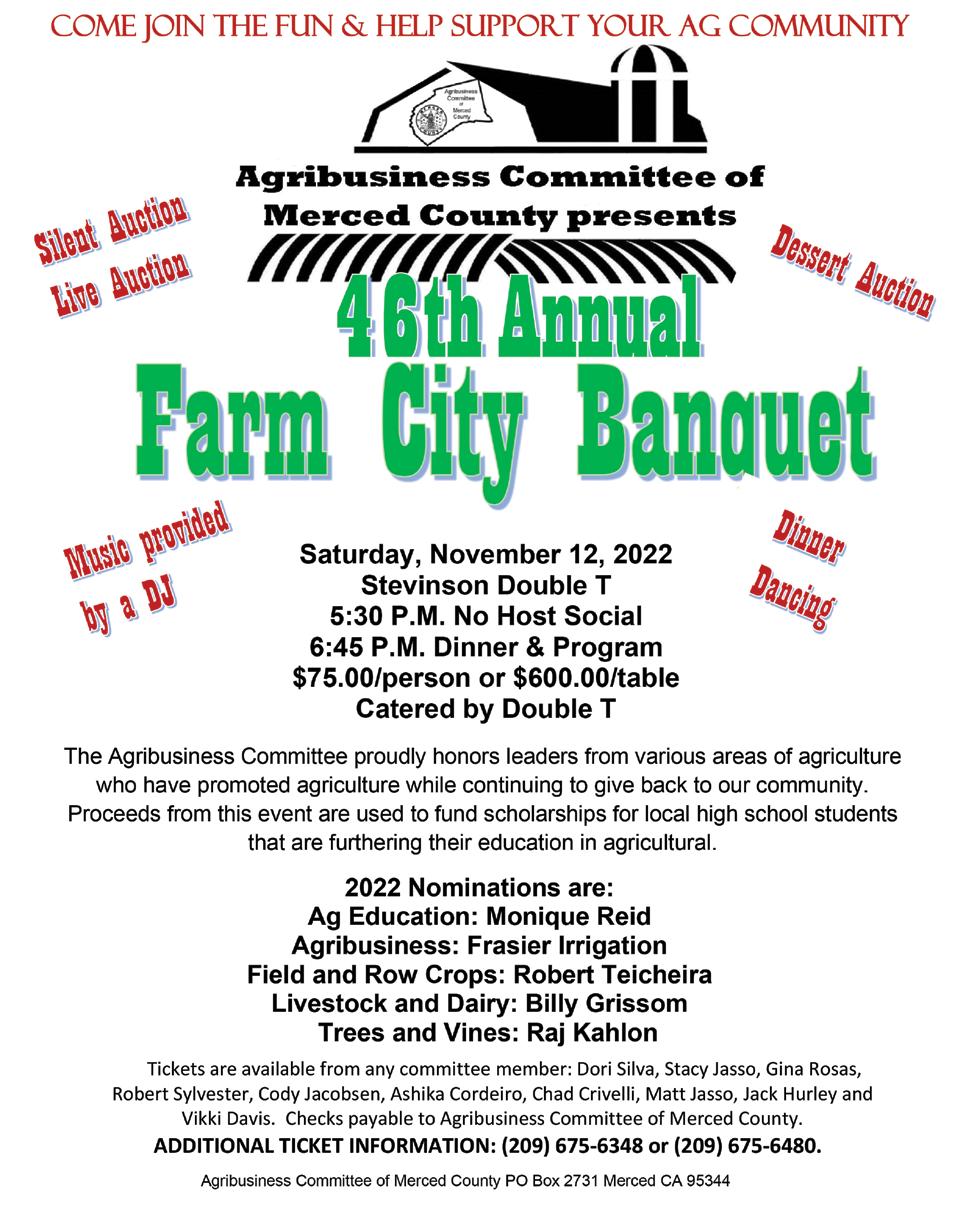
Merced County Farm Bureau Heritage Members
Platinum Heritage Members
Gold Heritage Members
Grimbleby Coleman CPAs Holt Ag Solutions Minturn Nut Company Turlock Irrigation District Valley Pacific Petroleum Services Inc.








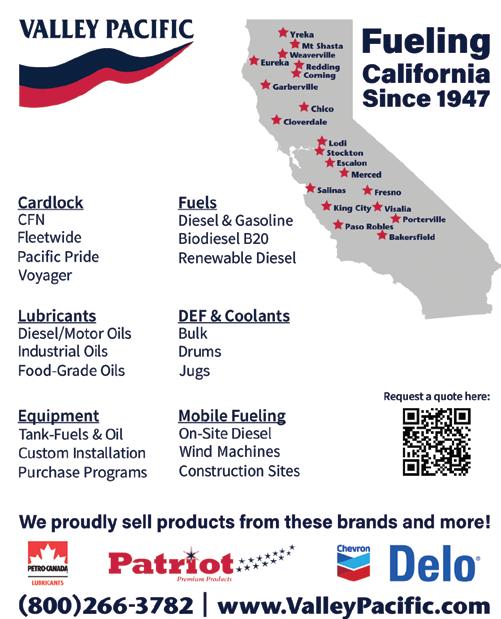
El Capitan FFA Ice Cream Social Promotes Collaboration Among Students
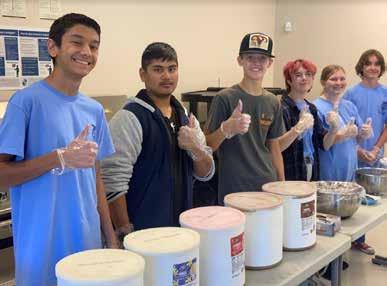 By: Branyon Bliss, El Capitan FFA Chapter Reporter
By: Branyon Bliss, El Capitan FFA Chapter Reporter

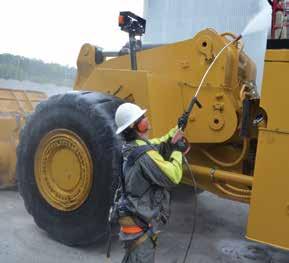

250 El Capitan FFA members attended the ice cream social meeting during the month of September. The meeting was held in the El Capitan High School cafeteria, where students played board games, musical chairs, BINGO and more. At the beginning of the meeting, El Capitan FFA’s chapter officer team started the meeting by performing the FFA opening and closing ceremonies, followed by our chapter President, Dylan Robinson introducing the 2022-2023 Chapter Officer team. El Capitan’s chapter officer team consists of Dylan Robinson, President; Adrian Miao, Vice president; Jordan Garcia, Secretary; Esther Navarro, Treasurer; Branyon Bliss, Reporter; Zach Escobar, Sentinel; Anahi Ortega, Historian; and Philip Miller, Parliamentarian.
After the team was introduced, students were able to choose from multiple flavors of ice cream and toppings. Students spent the next hour socializing with their friends. FFA members were able to collaborate with new people, as well as build friendships. The goal of the meeting was to enjoy time with friends while also having an opportunity to make new friends. The El Capitan FFA Chapter Officer Team was happy with the overall success of the event. “I believe the meeting went amazingly well,” said Anahi Ortega, El Capitan FFA Chapter Historian, “I loved being able to see FFA members collaborate in a casual setting. Many students were getting out of their comfort zones and using the meeting as a great opportunity to meet new people.” On top of all of these amazing things, FFA members brought non-FFA members to the meeting to encourage interest in the ECHS agriculture
program. In conclusion, the Ice Cream Social was a huge success, and El Capitan FFA looks forward to future meetings, where students can enjoy what El Capitan FFA has to offer to all
students no matter their background or interests. For more information about the El Capitan Agriculture/FFA program, please follow us on social media, or visit www.elcapitanffa.org.


How California’s Bullet Train Went Off the Rails
By: Ralph Vartabedian, The New York TimesLOSANGELES — Building the nation’s first bullet train, which would connect Los Angeles and San Francisco, was always going to be a formidable technical challenge, pushing through the steep mountains and treacherous seismic faults of Southern California with a series of long tunnels and towering viaducts.
But the design for the nation’s most ambitious infrastructure project was never based on the easiest or most direct route. Instead, the train’s path out of Los Angeles was diverted across a second mountain range to the rapidly growing suburbs of the Mojave Desert — a route whose most salient advantage appeared to be that it ran through the district of a powerful Los Angeles county supervisor.
The dogleg through the desert was only one of several times over the years when the project fell victim to political forces that have added billions of dollars in costs and called into question whether the project can ever be finished.
Now, as the nation embarks on a historic, $1 trillion infrastructure building spree, the tortured effort to build the country’s first high-speed rail system is a case study in how ambitious public works projects can become perilously encumbered by political compromise, unrealistic cost estimates, flawed engineering and a determination to persist on projects that have become, like the crippled financial institutions of 2008, too big to fail.
Proposed California High Speed Rail
The California bullet train’s route from Los Angeles to San Francisco, traversing the state’s mountain ranges and its Central Valley, is shown in a dark black line. The route was selected over proposals that would have roughly followed the I-5 and the I-580 highways between Southern and Northern California. The light gray line shows a proposed second phase that would extend the system to San Diego and Sacramento, though it has not received environmental approvals or funding.
A review of hundreds of pages of documents, engineering reports, meeting transcripts and interviews with dozens of key political leaders show that the detour through the Mojave Desert was part of a string of decisions that, in hindsight, have seriously impeded the state’s ability to deliver on its promise to create a new way of transporting people
in an era of climate change.
Political compromises, the records show, produced difficult and costly routes through the state’s farm belt. They routed the train across a geologically complex mountain pass in the Bay Area. And they dictated that construction would begin in the center of the state, in the agricultural heartland, not at either of the urban ends where tens of millions of potential riders live.
The pros and cons of these routing choices have been debated for years. Only now, though, is it becoming apparent how costly the political choices have been. Collectively, they turned a project that might have been built more quickly and cheaply into a behemoth so expensive that, without a major new source of funding, there is little chance it can ever reach its original goal of connecting California’s two biggest metropolitan areas in two hours and 40 minutes.
When California voters first approved a bond issue for the project in 2008, the rail line was to be completed by 2020, and its cost seemed astronomical at the time — $33 billion — but it was still considered worthwhile as an alternative to the state’s endless web of freeways and the carbon emissions generated in one of the nation’s busiest air corridors.
Fourteen years later, construction is now underway on part of a 171-mile “starter” line connecting a few cities in the middle of California, which has been promised for 2030. But few expect it to make that goal.
Meanwhile, costs have continued to escalate. When the California HighSpeed Rail Authority issued its new 2022 draft business plan in February, it estimated an ultimate cost as high as $105 billion. Less than three months later, the “final plan” raised the estimate to $113 billion.
The rail authority said it has accelerated the pace of construction on the starter system, but at the current spending rate of $1.8 million a day, according to projections widely used by engineers and project managers, the train could not be completed in this century.
“We would make some different decisions today,” said Tom Richards, a developer from the Central Valley city of Fresno who now chairs the authority. He said project executives have managed to work through the challenges and have a plan that will, for the first time, connect 85 percent of California’s residents with a fast, efficient rail
system. “I think it will be successful,” he said.
But there are growing doubts among key Democratic leaders in the Legislature — historically the bullet train’s base of support — and from Gov. Gavin Newsom, who has been cautious about committing new state financing. As of now, there is no identified source of funding for the $100 billion it will take to extend the rail project from the Central Valley to its original goals, Los Angeles and San Francisco, in part because lawmakers, no longer convinced of the bullet train’s viability, have pushed to divert additional funding to regional rail projects.
“There is nothing but problems on the project,” the speaker of the State Assembly, Anthony Rendon, complained recently.
The Times’s review, though, revealed that political deals created serious obstacles in the project from the beginning. Speaking candidly on the subject for the first time, some of the high-speed rail authority’s past leaders say the project may never work.
Unless rail authority managers can improve cost controls and find significant new sources of funding, they said, the project is likely to grind to a halt in future decades.
“I was totally naïve when I took the job,” said Michael Tennenbaum, a former Wall Street investment banker who was the first chairman of the rail authority 20 years ago. “I spent my time and didn’t succeed. I realized the system didn’t work. I just wasn’t smart enough. I don’t know how they can build it now.”
Dan Richard, the longest-serving rail chairman, said starting the project with an early goal of linking Los Angeles and San Francisco was “a strategic mistake.” An initial line between Los Angeles and San Diego, he said, would have made more sense.
And Quentin Kopp, another former rail chairman who earlier served as a state senator and a Superior Court judge, said the system would be running today but for the many bad political decisions that have made it almost impossible to build.
“I don’t think it is an existing project,” he said. “It is a loser.”
The 2-hour, 40-minute Dream
Although it comes more than a half century after Asia and Europe were running successful high-speed rail systems, the bullet train project when it was first proposed in the 1980s was
new to America, larger than any single transportation project before it and more costly than even the nation’s biggest state could finance in one step.
The state was warned repeatedly that its plans were too complex. SNCF, the French national railroad, was among bullet train operators from Europe and Japan that came to California in the early 2000s with hopes of getting a contract to help develop the system.
The company’s recommendations for a direct route out of Los Angeles and a focus on moving people between Los Angeles and San Francisco were cast aside, said Dan McNamara, a career project manager for SNCF.
The company pulled out in 2011.
“There were so many things that went wrong,” Mr. McNamara said. “SNCF was very angry. They told the state they were leaving for North Africa, which was less politically dysfunctional. They went to Morocco and helped them build a rail system.”
Morocco’s bullet train started service in 2018.
The goal in California in 2008 was to carry passengers between Los Angeles and San Francisco in 2 hours 40 minutes, putting it among the fastest trains in the world in average speed.
The most direct route would have taken the train straight north out of Los Angeles along the Interstate 5 corridor through the Tejon Pass, a route known as “the Grapevine.” Engineers had determined in a “final report” in 1999 that it was the preferred option for the corridor.
But political concerns were lurking in the background. Mike Antonovich, a powerful member of the Los Angeles County Board of Supervisors, was among those who argued that the train could get more riders if it diverted through the growing desert communities of Lancaster and Palmdale in his district, north of Los Angeles.
The extra 41 miles to go through Palmdale would increase costs by 16 percent, according to the 1999 report, a difference in today’s costs of as much as $8 billion.
According to interviews with those working on the project at the time, the decision was a result of political horse-trading in which Mr. Antonovich delivered a multi-billion-dollar plum to his constituents.
“I said it was ridiculous,” said Mr. Tennenbaum, the former rail authority
Bullet Train continued from page 14
chairman. “It was wasteful. It was just another example of added expense.”
The horse-trading in this case involved an influential land developer and major campaign contributor from Los Angeles, Jerry Epstein.

Mr. Epstein, who died in 2019, was a developer in the seaside community of Marina del Rey who, along with other investors, was courting the Los Angeles County Board of Supervisors for a 40-year lease extension on a huge residential, commercial and boat dock development.
Mr. Epstein was also a member of the rail authority board, and he became a strong backer of Mr. Antonovich’s proposal for a Mojave Desert diversion on the bullet train.
“The Palmdale route was borne of a deal between Epstein and Antonovich, absolutely,” said Art Bauer, the chief staff member on the State Senate Transportation Committee, speaking publicly on the matter for the first time.
“If I get my lease, you get my vote was the deal,” Mr. Bauer said. Though Mr. Epstein was only one member of the board, his lobbying of other board members proved critical, he said. “Epstein got the votes. The staff didn’t get the votes. The staff didn’t want to go that way.”
The desert route “sacrificed travel time and increased the costs,” and opened the door to “a whole series of problems” that have become only clearer as time has gone on, he said. “They betrayed the public with this project.”
A similar assessment was made by Hasan Ikhrata, a former executive director of the Southern California Association of Governments, the giant regional planning agency that helped build powerful support for the bullet train.
The rail route “was not based on technical and financial criteria,” Mr. Ikhrata said.
In a recent interview, Mr. Antonovich, now retired, said there was no connection between Mr. Epstein’s support for the Palmdale route and his own support for the lease extension in Marina del Rey. “Jerry played a role in promoting Palmdale,” he said, but “they were two separate breeds of cat, the Marina and the desert.”
There were plenty of reasons for routing the train through the two desert cities, where more passengers could board, he said, and it was only natural that his constituents would want to see
benefits from a bullet train. “We wanted to share all that stuff.”
The dogleg from Burbank to Palmdale was never without advantages. For one thing, said Mr. Richards, the current rail authority chairman, the direct route through the Grapevine would have had higher land acquisition costs and faced opposition by a major landowner. After the decision was made, Mr. Richards said, a follow-up study validated the choice.
But it has presented a complex engineering challenge, requiring 38 miles of tunnels and 16 miles of elevated structures, according to environmental reports.
And it introduced a fundamental conflict that has dogged the project. If the train was to rush passengers between the state’s two urban hubs almost as fast as they could fly, how much speed should be sacrificed by turning it into a milk run across the huge state?
Then came the decision to start building a train between Los Angeles and San Francisco that reached neither city.
A Bullet Train for the Farm Belt
The idea of beginning construction not on either end, but in the middle — in the Central Valley, a place few in Los Angeles would want to go — was a political deal from the start.
Proponents of running the rail through the booming cities of Bakersfield, Fresno and Merced cited a lot of arguments: The Central Valley needed jobs. It would be an ideal location to test equipment. It would be the easiest place to build, because it was mostly open farmland.
But the entire concept depended on yet another costly diversion.
Instead of following Interstate 5 through the uninhabited west end of the valley, the train would travel through the cities on the east side — more passengers, but also more delays, more complications over acquiring land, more environmental problems.
Rail authority leaders said starting the bullet train in the center of the state reflected a decision to make sure it served 85 percent of the residents of California, not just people at the end points. Running it on the east end of the valley, they said, would ensure that it served existing cities; building on empty farmland would encourage new sprawl.
“The key to high-speed rail is to connect as many people as possible,” Mr. Richards said.
The rail authority spokeswoman, Annie Parker, said studies in 2005 showed that building along the east side of the Central Valley provided
better and faster service, though it was 6 percent more expensive. In any case, she said, the current route is what voters agreed to in 2008 in a $9 billion bond authorization.
State senators were under pressure to endorse the Central Valley plan, not only from Gov. Jerry Brown but also from President Barack Obama’s transportation secretary, Ray LaHood, who came to the state Capitol to lobby the vote.
The Central Valley quickly became a quagmire. The need for land has quadrupled to more than 2,000 parcels, the largest land take in modern state history, and is still not complete. In many cases, the seizures have involved bitter litigation against well-resourced farmers, whose fields were being split diagonally.
Federal grants of $3.5 billion for what was supposed to be a shovel-ready project pushed the state to prematurely issue the first construction contracts when it lacked any land to build on. It resulted in hundreds of millions of dollars in contractor delay claims.
“The consequence of starting in the Central Valley is not having a system,” said Rich Tolmach, who headed the
nonprofit California Rail Foundation that promotes public rail transit and was deeply involved in the early days of the project. “It will never be operable.”
Which Path Through the Mountains?
More political debate ensued over what route the train would take into the San Francisco Bay Area. The existing rail corridor through Altamont Pass, near Livermore, was a logical alternative.
The French engineering company Setec Ferroviaire reported that the Altamont route would generate more ridership and have fewer environmental impacts.
But as with so many decisions on the project, other considerations won the day. There was heavy lobbying by Silicon Valley business interests and the city of San Jose, which saw the line as an economic boon and a link to lower cost housing in the Central Valley for tech employees. They argued for routing the train over the much higher Pacheco Pass — which would require 15 miles of expensive tunnels.
In 2008, the rail authority issued its record of decision.
“It absolutely has to go through Pacheco and up through San Jose,” Mr. Richards said.
Fagundes Farms Pumpkin Patch
 By: Denelle Flake, Farm News Editor
By: Denelle Flake, Farm News Editor
Fagundes Farms in Los Banos was established in 1917, and they primarily farm cotton and alfalfa. Allison Fagundes recently moved back home to return to her family’s farm and she wanted her own role in the operation. In 2021, her dad gave her a quarter-acre of ground to experiment with growing pumpkins. Allison shared that the ground was once old cattle corrals, so they were unsure if they would have success growing the crop. After learning the trick to growing pumpkins Allison was ready to expand, so in 2022 she planted seven acres of pumpkins.
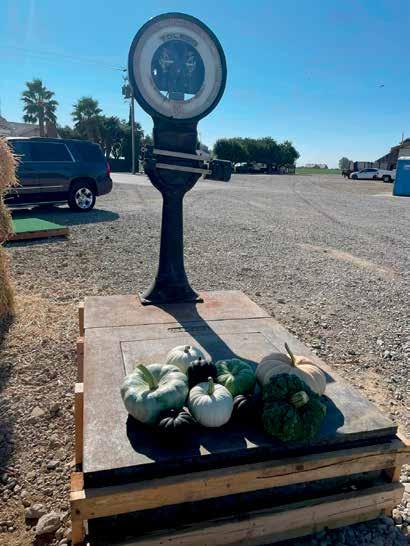


This year, Allison grew 37 beautiful varieties of pumpkins. She offers colors ranging from pinks, greens, oranges, whites, and creams. She even planted a Black Kat variety that is matte black in color, making for a great Halloween décor option. In Allison’s words, “Whether you are interested in using pumpkins for cooking, carving, or adorning your front porch, we have endless sizes, colors, and textures to match your holiday enthusiasm.”
The pumpkin patch is located at 19407 Almond Drive in Los


Banos and is open on Saturdays and Sundays from 9am to 5pm. When you come down Almond Drive, you take the paved road off the canal to the ranch with white houses. Then, you make a right after the small white house and you will see the large white tent that covers the pumpkins. Pumpkins are $1.25/ pound and you get to weigh your lot on a large vintage scale.
Allison is excited to continue growing her pumpkin business in the years to come. Fagundes Farms Pumpkin Patch will remain open through October 30th this year, so make sure to give them a visit and support your local farmer!

Pumpkin Patch
COVID
By: FELSSupplemental Paid Sick Leave to be Extended to Dec. 31
The California Legislature passed Assembly Bill 152 (Budget Committee) late in the legislative session that ended on Aug. 31; Gov. Gavin Newsom is expected to sign it soon.
A budget "trailer" bill like many passed by the Legislature to adjust state operations implementing the state's budget, AB 152 contains a hodgepodge of provisions covering a variety of topics on state government operations.
As often happens with trailer bills, AB 152 includes a provision of interest to California employers that seemingly has nothing to do with state operations: an extension of COVID-19 supplemental paid sick leave (SPSL) enacted in February and effective until Sept. 30; if Gov. Newsom signs AB 152 as expected, SPSL will be in effect until Dec. 31.
AB 152 SPSL is structured like the February 2022 version of SPSL, with two 40-hour "buckets" of leave. The first is generally available on demand by an employee. In contrast, an employer may restrict access to the second bucket to employees who furnish proof of a positive COVID test for the employee or the family member for whom the employee is caring. The new version of SPSL allows employers to require employees to furnish a second positive test within 24 hours.
The extended COVID SPSL also includes the California Small Business COVID-19 SPSL Relief Grant Program available until Jan. 1, 2024. Administered by the Governor's Office of Business and Economic Development (GoBiz), grants of up to $50,000 will be available to offset the cost of furnishing SPSL. Implementation details, including frequently asked questions, implementation guidance, and information about the grant program should be available in October.
Be Ready for an Active Shooter Situation
No one wants to contemplate that their place of business might be the scene of an active shooter situation. And most think “it could never happen here,” until it does. Sadly, active shooter events can and do happen in workplaces. Here are simple and effective things you can do to boost your employees’ chances
FELS Updates
of escaping an active shooter situation unhurt:
Run—Train your employees to evacuate safely and quickly: Your employees should be prepared to get away from the active shooter; this is often the first and best course of action:
• Help each employee identify two exits and escape routes from that employee’s work location.
• Instruct employees to help others find escape routes, if feasible.
• Instruct them on the use of and how to access items like emergency transport blankets to help someone who can’t escape un-assisted, if it's safe to do so.
• Ensure they understand it’s important to exit to a safe area regardless of whether others do so.
• Instruct them to call 911 once it’s safe to do so.
• Instruct them to keep hands visible and to comply with instructions from law enforcement personnel.
Hide—Identify possible hiding places, and train employees to hide if evacuation isn’t possible:
• Teach employees to lock and barricade themselves in a safe area if feasible.
• Instruct them to use door locks, desks, or other furniture to block the shooter from entering the room.
• Hiding places should be out of sight of windows.
• Instruct employees to silence devices like cell phones, tablets, and computer speakers that could make noise and alert a shooter to their presence.
• Instruct them to alert 911 to their situation if it’s safe to do so with-out alerting the shooter to their location.
Fight—If Options to Run or Hide are Not Available:
• Fighting the shooter is the last resort if employees can’t escape or hide.
• Tactics might include yelling at or physically attacking the shooter, hopefully outnumbering the shooter.
• Use fists, improvised weapons, or thrown objects (reports from some active shooter situations indicate that fire extinguishers can be wielded somewhat easily and have considerable weight that can make them effective improvised weapons;
chemical fire extinguishers can also leave a distinctive heavy white residue if sprayed at an attacker; this may stun or disable the shooter and make it easier for law enforcement to identify the shooter.)
• Once employees begin to attack a shooter, they must commit to that course of action; failing to follow through can allow the shooter to regroup and continue the attack.
• Consider using an outside selfdefense expert to help train employees on effective self-defense tactics.
Drill—So That Response is Second Nature: Repetitive drills help employees remember the proper course of action under stress.
FAST Recovery Act Signed by Gov. Newsom
On Sept. 5, Gov. Gavin Newsom signed into law Assembly Bill 257, the Fast Food Accountability and Standards (FAST) Recovery Act. Restaurant industry opponents of AB 257 responded immediately by launching a voter referendum drive for the 2024 ballot. If that referendum qualifies, the FAST Recovery Act cannot be implemented until the voters approve or disapprove the referendum. Supported by the California Service Employees International Union and Fight for $15, AB 257 was originally authored by former Assembly Member Lorena Gonzalez (D-San Diego), who later championed it after resigning her Assembly seat and assuming leadership of the California Labor Federation.
The FAST Recovery Act establishes in the Department of Industrial Relations (DIR) a Fast Food Sector Council to set industry-wide minimum standards on minimum wages, working hours, working conditions, and promoting the “health, safety and welfare” of California fast food workers, including ensuring wages align with the cost of living. The Council’s activities will apply to “fast food chains” made up of 100 or more establishments nationally sharing a common brand or having common standards for restaurant appearance, marketing, packaging, products, and services. It applies to any single location in California if the chain has 100 or more locations anywhere in the U.S.; restaurants need not be franchised to be covered. This will
likely cover any counter service, quick service, fast casual, and many other types of restaurants.
The Council will be composed of up to 10 members with representatives of the DIR, fast food franchisors, fast food franchisees, fast food restaurant employees, advocates for fast food employees, and one representative from the Governor’s Office of Business and Economic Development (GoBiz). The Council’s powers will be similar to those of the now-defunct Industrial Welfare Commission, which issued 17 Wage Orders during its life, including Wage Order 14 covering agricultural employment. The Council will meet every six months and propose standards, repeal of standards, and amendments to standards by Jan. 15 of each year. Unless the Legislature were to act otherwise, the Council’s actions would take effect by Oct. 15 of that year. The FAST Recovery Act empowers the Council to raise the minimum wage for fast food workers to $22 per hour in 2023, with cost-of-living increases thereafter. The Council may not impose new paid time off benefits like paid sick leave or paid vacation.
The role of existing regulatory agencies with rulemaking powers like the Cal/OSHA Standards Board is unclear. Discussions at a recent Standards Board public meeting indicate the Board and its staff expect to see an increased workload as a result of the Council’s actions, meaning occupational safety and health changes proposed by the Council might need to be considered and approved by the Board. Cities and counties in California with populations greater than 200,000 may establish their own Local Fast Food Councils that may make to the state Council recommendations limited to state standards and not applicable to any local wage, paid sick leave or other standards. Twenty-two cities and 28 counties have populations greater than 200,000.
The passage of the FAST Recovery Act could either pave the way for similar “councils” covering retail, home health care, manufacturing, and other industries, or the Council’s ambit could be expanded to cover other industries. The Legislature already has singled out for special attention specific industries including textile manufacturing and car washing. Might California agriculture be next?
FELS Update
continued from page 17
Upcoming FELS Training
Mandatory Produce Safety Training (in person):
The Food Safety Training Partnership, a co-operative effort of California Farm Bureau, Farm Employers Labor Service, and the Safe Food Alliance, is offering produce safety training required by the federal Food Safety Modernization Act.
UPCOMING DATES:
Oct. 5, Glenn County Farm Bureau, Orland
Nov. 15, Yolo County Farm Bureau, Woodland
Dec. 3, California Farm Bureau Young Farmers & Ranchers Conference, Monterey
Dec. 4, California Farm Bureau Annual Meeting, Monterey
Jan. 1, Safe Food Alliance, Kingsburg
Jan. 18, San Diego County Farm Bureau, Escondido
Jan. 26, Stanislaus County Farm Bureau,
Modesto
Feb. 1, Tehama County Farm Bureau, Red Bluff March 15, Safe Food Alliance, Kingsburg
The $35 training fee is substantially subsidized by a grant from the California Department of Food and Agriculture.
You can find registration and more information, including additional training dates and times, at the Food Safety Training Partnership website.
FELS Partners with Harvust to Bring You Streamlined Hiring, Training &
Communication
FELS is proud to partner with Harvust, 2021 Farm Bureau Entrepreneur of the Year. Harvust offers electronic and remote software solutions for hiring, training, and communicating with your employees. FELS subscribers can find FELS training and hiring materials ready to go on Harvust and will receive $500 free use of Harvust tools when they sign up. For information or to schedule a demo, call Harvust’s Riley Clubb at 509-424-5965, or visit www. harvust.com/FELS.
Merced Courthouse Museum to feature ag exhibit showcasing local farmers
By: Sarah Lim, Merced Courthouse Museum, Merced Sun-StarWhether it is a snowy almond orchard in the spring, a waving sea of corn fields in the summer, or row after row of ripening tomatoes in the fall, Merced County has some of the prettiest and most productive farmland in the country.
Bare farmland is like a blank canvas with boundless possibilities, and Merced County farmers are some of the hardest working “artists” whose creations feed the world.
Merced Camera Club has captured these “artists” at work in a show that will open at the Merced County Courthouse Museum on October 13 at 5:00 p.m.
The “Land and Water: The Building of an Ag Empire” exhibit provides a contemporary look at Merced County as an agricultural empire through the lens of Merced Camera Club, focusing on the interconnection of land, people, and water.
This display is a culmination of the exhibits of the last three years. In 2019, we explored the development of our current irrigation systems in the “MID Centennial Celebration” exhibit.
We then studied the establishment of different communities in “Settlement of Merced County” in 2021 and the evolution of tractor and farm equipment in “Tractor Dealerships in Merced County” earlier this year.
All of these key “ingredients” have made Merced County a breadbasket of the world. However, forces such
as climate change, legislation, and population growth have impacted farming practices and methods. In addition to the Camera Club photos, you will be able to read about some of these changes in excerpts from “The Wisdom of Merced County Farmers” (3 Vols., 2010-2012), edited by Susan Walsh.
Farmers like Cannon Michael embrace technology in farming and in connecting with the urban consumer. Cannon is a sixth-generation Los Banos farmer whose great-great-great grandfather was Cattle King Henry Miller.
Cannon was not born or raised as a farmer; however, his affinity to his ancestral land drew him to the West Side after growing up in San Francisco and a stint in the real estate business in Atlanta. In addition to farming as a family tradition, it is the freedom of living in the country that lured him to the valley to join the Bowles Farming Company. Cannon believes technology like satellite imaging and yield monitoring gives farmers critical support and cost savings.
Farmers like Galen Miyamoto view farming as no longer just a way of life but a business. A farmer needs to have a good understanding of “finances with profits and losses, biology with what makes a productive tree grow, mechanical skills to keep equipment running, and chemistry for the proper use of insecticides, herbicides, and fungicides.” As a Sansei (third generation) farmer, Galen has followed the footsteps of his grandfather, Matsuichi Miyamoto.
The latter immigrated to America from Japan in 1909 and started farming carrots, eggplants, and strawberries in the Cortez area. Galen grows almonds on the farm today.
Farmers like Bob Giampaoli of Le Grand feel bogged down by regulations and water and labor issues, which have taken the joy out of farming. Bob remarks, “My friends and I sometimes refer to ourselves as fantasy farmers because we spend so little time in the field and so much time managing and putting out fires.”
Bob’s grandfather, Marino Giampaoli, and his fellow Italians Florindo Marchini and Decimo Marchini started the Giampaoli & Marchini tomato business in 1929; today, Bob and other members of the Giampaoli family are the sole owners of the company known as Live Oak Farms.
Farmers like Kevin Olds believe farmers’ livelihoods depend upon the health of the land. He grows lettuce and herbs hydroponically in his greenhouse farm in Le Grand. Growing up on his parents’ sheep and crop ranch in Dos Palos, Kevin learned to love the land and appreciate nature from his father. To protect the environment, he is always looking for new ways to engage in organic farming. His favorite tool in his greenhouse is a tiny wasp called Aphipar. He remarks, “This beneficial insect has had the biggest impact in my production of hydroponic lettuce. It attacks aphids out of reach of my organic sprays.”
Farmers like Daniel Clendenin of Merced provide some of the most
helpful advice for our future farmers. He says, “Farming is a way of life you choose, long hours, good and bad times. You have to love it. There may be downtime, but there is always something to do. Embrace technology. Things are changing so fast you need it to keep up to stay in business. Go to school, but realize that what you learn is only a starting point. Become a problem solver, use common sense and be adaptable to changing conditions.”
Other farmers also featured in this exhibit include Jeff Marchini of Le Grand, Bill and Rhonda Crivelli of Dos Palos, Michael Duarte of Atwater, Joe and Augie Scoto of Merced, Dante Migliazzo of Atwater, and Scott Magneson of Ballico.
To read more about these stories from “The Wisdom of Merced County Farmers” and view the beautiful photographs from the Merced Camera Club, please join us for the exhibit opening on October 13. During the 6 p.m. reception, Camera Club members Jim Cunningham, Doug Torres, and Susan Walsh will participate in a PowerPoint/video presentation about Merced County farm scenes, including many stunning drone shots of crop harvesting. For more information about the exhibit, please contact the Museum office at (209) 723-2401.
Editor’s Note: ‘Land and Water: The Building of an Ag Empire” exhibit will run through February 19, 2023. This exhibit will be open for viewing Wednesday through Sunday from 1pm4pm. Admission is free.
Join
Merced

Tuesday, October 25, 5:30pm Barbara Stowell,

Tuesday, November
David
October 7, 2022 -
Climate Change
The California Department of Food and Agriculture (CDFA) announced that it has awarded $37.65 million in grant funding to 41 methane reduction projects across the state. These projects, part of the Alternative Manure Management Program (AMMP) and the Dairy Digester Research and Development Program (DDRDP), will reduce greenhouse gas emissions from manure on California dairy and livestock farms.
In line with the Budget Act of 2021’s guideline to prioritize AMMP, 27 AMMP projects totaling $18.94 million and 14 DDRDP projects totaling $18.71 million in grant funds are being
Farm Bureau at work
awarded, and the projects will contribute $74.1 million in matching funds. These grants enable recipients to improve their manure management practices and are anticipated to result in a total estimated annual greenhouse gas (GHG) reduction of 233,393 metric tons of carbon dioxide equivalent (MTCO2e).
This latest round of grants brings the total of AMMP and DDRDP projects to 273 since 2015. Together, these projects are anticipated to reduce an estimated 2,555,727 metric tons of GHGs per year, which is equivalent to removing more than 550,600 cars from the road.
Crop Protection
The California Department of Pesticide Regulation will be hosting three public workshops to discuss and get feedback on their proposed Statewide pesticide application
notification system. This is an issue that CA Farm Bureau staff and counites have been heavily involved in at the local level as there have been pilots in Ventura, Riverside, Santa Cruz and Stanislaus counties. Members are encouraged to attend and give feedback as the proposals, such a potential 72 hour notice requirement and statewide website, are very concerning. The worshops are:
• In-Person Monday, Nov. 7 from 5-7 P.M. at the Oxnard Performin Arts Center in Venurta County: 800 Hobson Way, Oxnard, CA 93030
• In-Person Wednesday, Nov. 9 from 5-7 P.M. at the Orosi Memorial Hall in Tulare County: 41645 Rd. 128, Orosi, CA 93647
• Virtual Thursday, Nov 10 from 5-7 P.M. on zoom (Link: zoom.us/85867200295?
pwd=ZGNIMIJOVnF
CTEp4VVVsRzBnbmpGQT09; Meeting ID: 858 6720 0295; Passcode: 750189; Call in Number: +1-669-9009128)
Water
AB-1164 (Heath Flora, R-Ripon), was signed by the Governor last week. As previously reported, AB 1164 would enable irrigation districts to construct and maintain regulating reservoirs to store and efficiently convey irrigation water in the same manner as private agricultural entities. The measure is sponsored by the Modesto Irrigation District and limits the height of any structure to 15 feet, and a storage capacity of no more than 1,500 acrefeet. Farm Bureau is in support.
Editor’s Note: Appointments section removed
Labor Department proposes rule to reclassify contractors as employees
By: Karl Evers-Hillstrom, The Hillminimum wage laws that don’t apply to contractors.
October
11, 2022 - The Labor Department on Tuesday unveiled a proposed rule that would reclassify some independent contractors as company employees, a move that could disrupt the gig economy.
The highly anticipated rule takes aim at companies that the Biden administration says “misclassify” their employees as contractors. By becoming employees, those workers would be covered by overtime and
“Misclassification deprives workers of their federal labor protections, including their right to be paid their full, legally earned wages,” Labor Secretary Marty Walsh in a statement.
Labor unions have been pushing the Biden administration to go after industries that rely on contractors, including ride-share companies such as Uber and Lyft, noting that those workers are losing out on key benefits and will have trouble unionizing due to their contractor status.
The Labor Department said Tuesday that misclassification is a problem in a
host of industries, including home care, janitorial services, delivery, trucking and construction. The department said the widespread issue makes it difficult for some businesses to compete with those that misclassify their workers as contractors.
The Biden administration rule would replace Trump administration guidance that made it easier for companies to classify workers as contractors.
AFL-CIO President Liz Shuler said in a statement that the rule will “increase protections and expand benefits to so many working people who have been subjected to corporate work-arounds.”
Several business groups indicated
Tuesday that they will push to either oppose the rule or ensure that it doesn’t apply to their industry.
“As this process continues, our focus remains on advocating for the millions of app-based earners who choose this work because of the flexibility it provides,” Kristin Sharp, CEO of FLEX, a trade association representing gig companies, said in a statement.
Uber and Lyft each saw their stock price fall roughly 14 percent following the announcement. Gig companies could see their labor costs increase as much as 30 percent if they were required to reclassify contractors as employees, experts say.
Calif. expands family leave to 'designated persons'
By: Jason Resnick, Western FarmPressOnSept. 29, Gov. Gavin Newsom signed AB 1041, which states that in addition to the family members outlined in California’s paid sick leave law and the California Family Rights Act (CFRA), an employee also can take leave to care for a “designated person.”
Currently, under the CFRA, eligible
employees may take job-protected leave to care for their child, parent, parent-inlaw, grandparent, grandchild, sibling, spouse, or registered domestic partner.
AB 1041 adds a “designated person” to that list.
AB 1041 defines designated person as “any individual related by blood or whose association with the employee is the equivalent of a family relationship.”
Since the legislation does not define
who may be considered “the equivalent of a family relationship,” employers are cautioned against challenging the designation.
The employee need not designate the “designated person” in advance; the employee may identify the designee at the time they request the leave. However, employers may limit an employee to one designated person per 12-month period.
AB 1041 also adds a “designated person” to the list of family members an employee may take time off to care for under California’s Paid Sick Leave law. For purposes of paid sick leave, a “designated person” need not be related or be “the equivalent of a family relationship.” As under CFRA, employers are permitted to limit an employee to one designated person per 12-month period for paid sick days.
Upending water rights is easier said than done
By: Tim Hearden, Western FarmPressfew issues in the
contentious than its systems of water rights, as people in burgeoning urban centers start to gripe about water use by farms that date back generations. When there’s a drought, the voices who call for an overhaul of water rights grow louder and bolder.
In a blog post in April, Natural Resources Defense Council senior water division director Katie Poole complained the current system in California is propped up by a “violent, racist and exclusionary history.” She says state regulators should more strictly interpret their “reasonable use” doctrine to reflect the “changing reality” of modern times.
“It’s hard to imagine (Gov. Gavin) Newsom standing up today to argue that using water to irrigate millions of acres of nut orchards is a more reasonable use of water than providing sufficient water for communities and rivers,” she writes.
This conflict certainly isn’t limited to California. Recently I was with a group of reporters who toured the watershed that feeds the Great Salt Lake, which is depleted by drought and overuse as the region’s urban population booms. Growers in that
region are smarting from criticism from city dwellers who resent their irrigation of hay and cattle ground.
(This was an amazing four-day tour organized by the Intermountain West Joint Venture, a Montana-based conservation group. I’ll have much more about this tour soon.)
However, recent California court decisions demonstrate that upending the West’s more than century-old water rights mechanisms is probably easier said than done. In mid-September, the state’s 6th District Court of Appeal issued a ruling protecting the longstanding water rights of farmers, ranchers and water agencies.
The court ruled that the State Water Resources Control Board has no authority “to curtail an entire class of pre-1914 appropriative water rights solely on the basis that the Board believes that there will be insufficient water to serve all pre-1914 appropriative water rights.”
California Farm Bureau Senior Counsel Chris Scheuring called the ruling “a recognition that the state can’t regulate itself out of a water supply and demand crisis by targeting senior water rights, and a signal that we must renew our focus on new supply and infrastructure.”
This wasn’t the first time courts have taken issue with curtailments.
During the last drought a few years ago, senior rights holders won a ruling that the state issued curtailment orders without due process.
Political guru Dan Walters of CalMatters suggested last year that more frequent droughts will force California to “re-think its entire water system,” including water rights.
Perhaps those discussions will take place throughout the West, as intensifying drought puts waterways such as the Colorado River and the Bear River in Wyoming, Idaho and Utah to the test.
But as ingrained as water rights are in the fabric of the West, you can expect those deliberations to be lengthy, contentious and expensive.
M E R C E D C O U N T Y Y F & R
Thanksgiving Potluck

T h u r s d a y , N o v e m b e r 1 0 , 2 0 2 2
M e r c e d C o u n t y F a r m B u r e a u O f f i c e 5 : 3
M A I N D I S H T O B E P
P L E A S
S I D E
M
O
Mariposa County Business Member Directory

Mount
948-9412
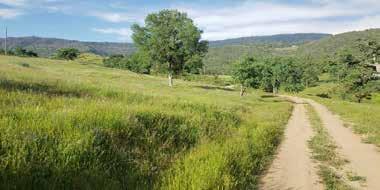







Merced County Business Member Directory

REPAIRS & SERVICES
AC King 722-3552
Atwater Radiator & Muffler, Inc. 358-2638
Car Plus 722-3552
SS Blue 722-2583
CONSTRUCTION CONTRACTORS
Allison Sierra, Inc. 966-4082
Dias Construction, Inc. 634-9601
Mid Cal Pipeline & Utilities, INC
M-Mig Construction, Inc.
FARM EQUIPMENT
Garton Tractor, Inc.
Holt Ag Solutions
383-7473
724-9488
726-4600
723-2021
J M Equipment Co Inc . 386-1797
Kirby Manufacturing 723-0778
Laird Mfg LLC 722-4145
N&S Tractor 383-5888
REAL ESTATE
Flanagan Realty 723-4337 (Merced)
Flanagan Realty (559) 665-1313 (Chowchilla)
Powerhouse Realty Jed Kruppa Team 617-6727 Property Team
Dick Templeton Property Team
769-4698
761-4441
Valley Real Estate Sales, Inc. 854-1000
& ORGANIZATIONS
Blue Diamond Growers
(559) 474-2996
California Farmland Trust ....... (916) 544-2712
California Sweet Potato Council 385-7403
California Women for Agriculture 723-5878
Central CA Irrigation District 826-1421
Cortez Growers Association 632-3118
Dos Palos Co-op Gin.......................... 387-4151
Farmers Rice Cooperative ...... (916) 923-5100
Gustine Drainage District 854-6782
Hilltop Ranch Inc. 874-1875
Livingston Farmers Assoc 394-7941
Merced Boosters 761-0815
Merced Irrigation District 722-5761
Merced College Ag Division
384-6250
Turlock Irrigation District................... 883-8205
UCCE Merced 385-7403
Water & Land Solutions 677-4700
FARM SERVICES
A-Bar Ag Enterprises 826-2636
Agri-Valley Consulting 769-2357
Caddy Shack Rodent Servc.....(559) 363-3315
Cal Ag Safety 351-0321
Cal Corn Growers Inc. (559) 665-5775
Chipponeri Electric
Dutch Door Dairy
634-4616
648-2166
Farm Management Inc. 667-1011
Guerrero Farm Labor 492-0408
Horizon Farms, Inc. 383-5225
J & F Fertilizer 854-6325
La Follette Enterprises, Inc. 632-1385 Mass Energy Works. (530) 710-8545 Machado Feed Company
658-5943 Maciel & Co 777-0911
Stanislaus Farm Supply 723-0704
Custom Farm Services 358-1759
FUEL SERVICES
Mid Valley Ag Service 394-7981 Modern Dairy 722-7452 Modesto Dairy Supply
669-6200
Silva & Sons Custom Spreading 667-2566 Stone Family Spreading 756-1491
The Pollination Connection (877) 970-BEES (2337)
FOOD PROCESSING
A V Thomas Produce
394-7514
Dallas Distributing Co 394-2803 Del Rio Nut Company 394-7945
Amarants Propane Service 358-2257 Hunt & Sons, Inc. (916) 383-4868
Western States Petroleum Assoc.
(661) 321-0884
Valley Pacific Petroleum 948-9412
Van De Pol Petroleum 667-0236
INSURANCE
Barlocker Insurance 383-0220
The Morning Star Company
826-8000 Minturn Huller Co-op (559) 665-1185 Parreira Almond Processing Co. 826-1262
Sensient Natural Ingredients (800) 558-9892
Yosemite Farms
383-3411
HARVESTING & HAULING
Fluetsch & Busby Insurance 722-1541 Rico, Pfitzer, Pires and Associates .. 854-2000
Walter Mortensen Insurance 353-2700
Western Valley Insurance 826-5667 Winton Ireland Insurance 394-7925
Baldes Hay Co
(559) 718-9714 Bertuccio Hay 761-6247 Castillo Brothers Hay 392-3817 Diamond J Farms 564-0870
Minturn Huller Co-op .............. (559) 665-1185
Northern Merced Hulling 667-2308 Wallace & Son 382-0131
IRRIGATION, WELLS, & SEPTIC
Allison Sierra, Inc. 966-4082
FINANCIAL SERVICES
Alice B. Contreras CPA 722-6778
American Ag Credit 384-1050/826-0320
Central Valley Community Bank........725-2820
Grimbleby Coleman CPAs 527-4220
Trans County Title Company 383-4660 Yosemite Farm Credit 383-1116
Agri-Valley Irrigation
756-2025
384-8494 Dickey's Pump Service 394-3112 Irrigation Design & Construction, LLC387-4500 Pacific Southwest Irrigation 460-0450 Precision Aqua
Quality Well Drillers 357-0675
Rain for Rent/Westside Pump (559) 693-4315 Robal Inc. 826-4540
MISCELLANEOUS
Berliner Cohen LLP 385-0700
The Hat Source 357-3424
Merced County Fair
722-1506
San Luis Pump Company.
383-0464 Shannon Pump Company 723-3904
INSECT
CONTROL
Environmental Spraying Service 667-1038
P. B. Iyer, M.D. 854-1120 Razzari Auto Center. 383-3673
Unwired Broadband (559) 336-4157
BUSSINESS
Ag Flag
FARM SUPPLIES
704-1790
Malm Ag Pest Management 392-6905 Star Creek Land
357-3424
Cal Farm Service 358-1554 Kellogs Supply 722-1501
Livingston True Value 394-7949
Hardware & Farm Supplies............... 394-7949 Marfab 826-6700
Modesto Dairy Supply 669-6200
Jorgensen
Live
Nicholas Calf
